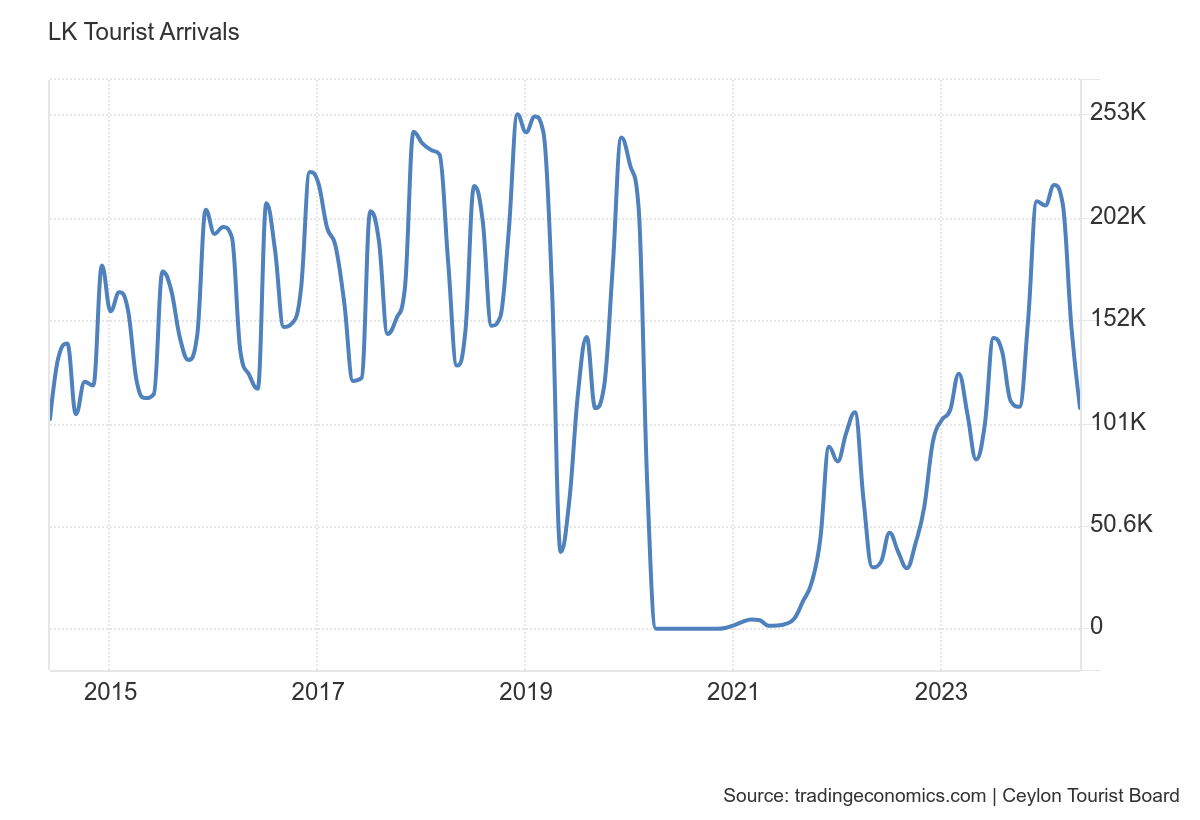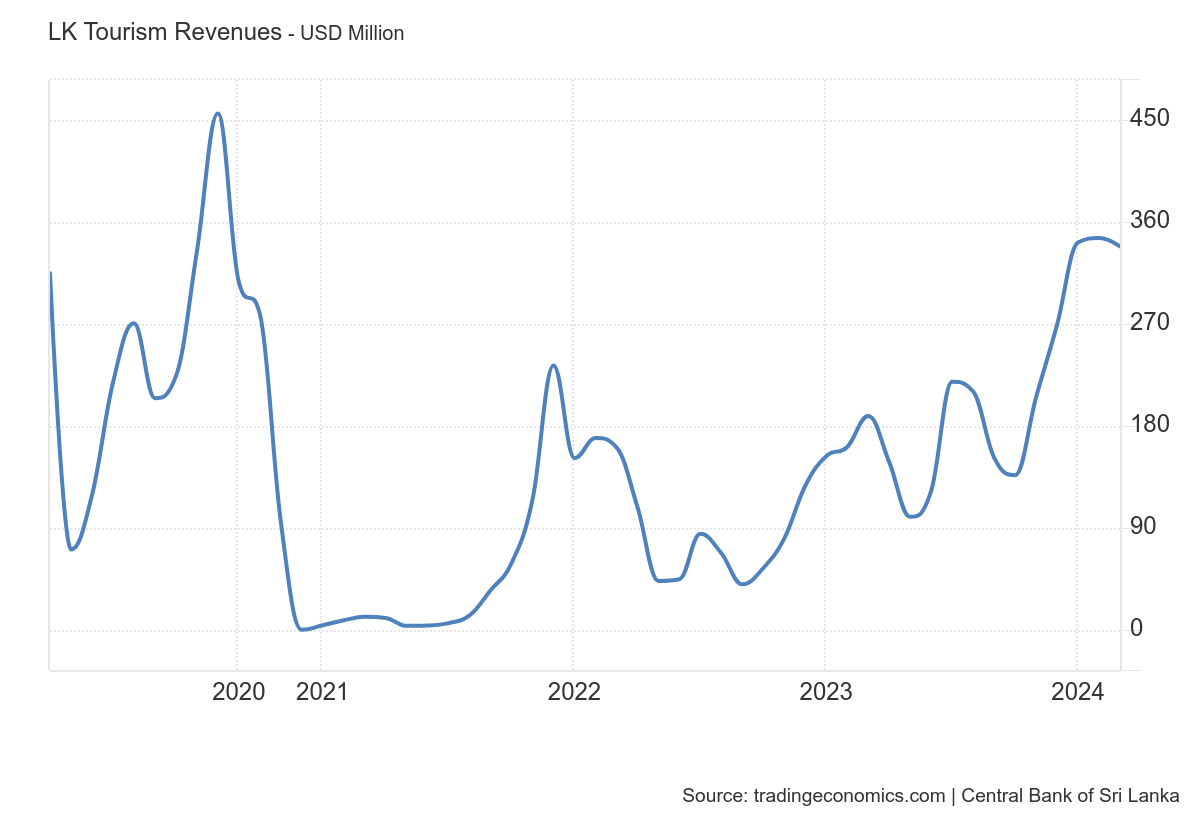
Blessed with stunning landscapes and rich cultural heritage, Sri Lanka holds immense potential to become a premier global tourist destination. Yet, despite its natural allure, the tourism industry in Sri Lanka faces several challenges that hinder its growth and economic contributions. With strategic planning and targeted initiatives, Sri Lanka can increase its tourism revenue to USD 5 billion by 2025.
Current State of Tourism in Sri Lanka
Overview of the Tourism Industry
The tourism sector in Sri Lanka has shown promising growth in recent years. In June 2024, foreign tourist arrivals reached 108,665, marking a 13.0% year-on-year increase. This growth underscores the country’s potential to attract a more significant number of international visitors. Key statistics reveal that the top tourist source markets include India, Russia, the UK, Germany, and China, with India contributing 25.2% of the total arrivals.
Major Tourist Source Markets
India remains Sri Lanka’s leading source market, followed by Russia, the UK, Germany, and China. Understanding the preferences and expectations of tourists from these countries is crucial for tailoring marketing and service strategies. For instance, while Indian tourists may seek cultural and heritage experiences, Russian tourists might be more inclined towards beach vacations and wellness tourism.
Challenges in the Tourism Sector
Impact of New Visa Regime
Introducing a new visa regime with higher fees on April 17th, 2024, led to a drop in tourist visits. However, amendments made later in the month helped mitigate some negative impacts. Ensuring a tourist-friendly visa policy is essential to maintain and increase tourist arrivals.
Discrepancy in Property Registrations
A significant gap exists between properties listed on Booking.com and those registered with the Sri Lanka Tourism Development Authority (SLTDA). Booking.com lists 12,846 properties with over 95,000 rooms, while SLTDA reports only 4,346 properties with 53,229. This discrepancy highlights the need for proper registration and taxation, which can enhance the economic benefits derived from tourism.
Tourism Leakage
Tourism leakage, where a substantial portion of tourism revenue leaves the country, is a critical issue for Sri Lanka. Over 60% of total tourism revenue is lost due to this leakage. Addressing this issue requires a concerted effort from the government and the private sector to promote local businesses and products, thereby retaining more revenue within the country.
Strategies for Boosting Tourism Revenue
Addressing Registration and Taxation
To tackle the registration and taxation discrepancy, it is essential to streamline the registration process and provide incentives for compliance. Ensuring all tourism-related properties are formally registered with SLTDA can significantly increase tax revenue. Moreover, simplifying registration and offering compliance benefits can encourage more property owners to register their establishments.
Integrating Individual Income
Many tourism employees, including guides, drivers, and hotel employees, operate outside the formal tax system. By implementing a simplified tax system for small-scale tourism operators and providing tax benefits, the government can encourage these individuals to comply and contribute to the national economy. This integration can significantly boost government revenue from the tourism sector.
Promoting Local Businesses
Promoting local businesses and encouraging tourists to spend on local goods and services is vital to reducing tourism leakage. Initiatives such as “Buy Local” campaigns and partnerships with local artisans can help retain more revenue within the country. Supporting local businesses boosts the economy and enriches the tourist experience by offering unique and authentic products.
Enhancing Tourist Attractions
Agro-Tourism
Agrotourism presents a unique opportunity to diversify Sri Lanka’s tourism offerings. The country can attract tourists interested in rural and sustainable tourism by promoting farm stays, agricultural tours, and farm-to-table dining experiences. Highlighting the beauty of Sri Lanka’s countryside and the richness of its agricultural heritage can create a niche market for agrotourism.
Ayurveda and Wellness Tourism
Sri Lanka is renowned for its traditional Ayurveda medicine and wellness practices. Promoting Ayurveda retreats, yoga sessions, and wellness centres can attract health-conscious tourists seeking relaxation and rejuvenation. This segment of tourism not only offers a unique experience but leverages the country’s rich heritage of natural healing.
Adventure Sports
Adventure sports such as surfing, kite surfing, scuba diving, hiking, and trekking offer thrilling experiences for adventure enthusiasts. Sri Lanka’s diverse landscapes provide the perfect backdrop for these activities. Developing infrastructure for adventure sports and promoting them through targeted marketing campaigns can draw adrenaline-seeking tourists to the country.
Digital Marketing and Promotion
Enhancing Digital Marketing Efforts
Despite the increasing trend of online bookings, Sri Lanka’s tourism industry needs effective digital marketing strategies. Enhancing digital marketing efforts can significantly increase visibility and attract more tourists. Collaborating with regional authorities to create cohesive marketing campaigns can amplify Sri Lanka’s appeal as a travel destination. Utilising social media, influencers, and travel blogs can also reach a broader audience and drive tourist interest.
Seasonal Marketing Strategies
Adapting marketing strategies to different seasons can attract tourists during off-peak times. For example, promoting Sri Lanka as a winter getaway for European travellers can boost arrivals during their colder months. Simultaneously, it’s essential to recognise that winter in Australia and New Zealand differs from Europe. Effective digital marketing should target the right segments at the right time and place. Tailoring campaigns to highlight the country’s favourable weather and unique attractions throughout the year can help maintain a steady flow of tourists.
Segmentation and Personalisation
Understanding the preferences and expectations of different tourist segments is crucial for effective marketing. Sri Lanka can attract more tourists by identifying high-value travellers from various countries and tailoring marketing campaigns to their interests. For instance, Chinese travellers might be drawn to luxury shopping and cultural experiences, while UK travellers might prefer beach holidays and adventure sports.




